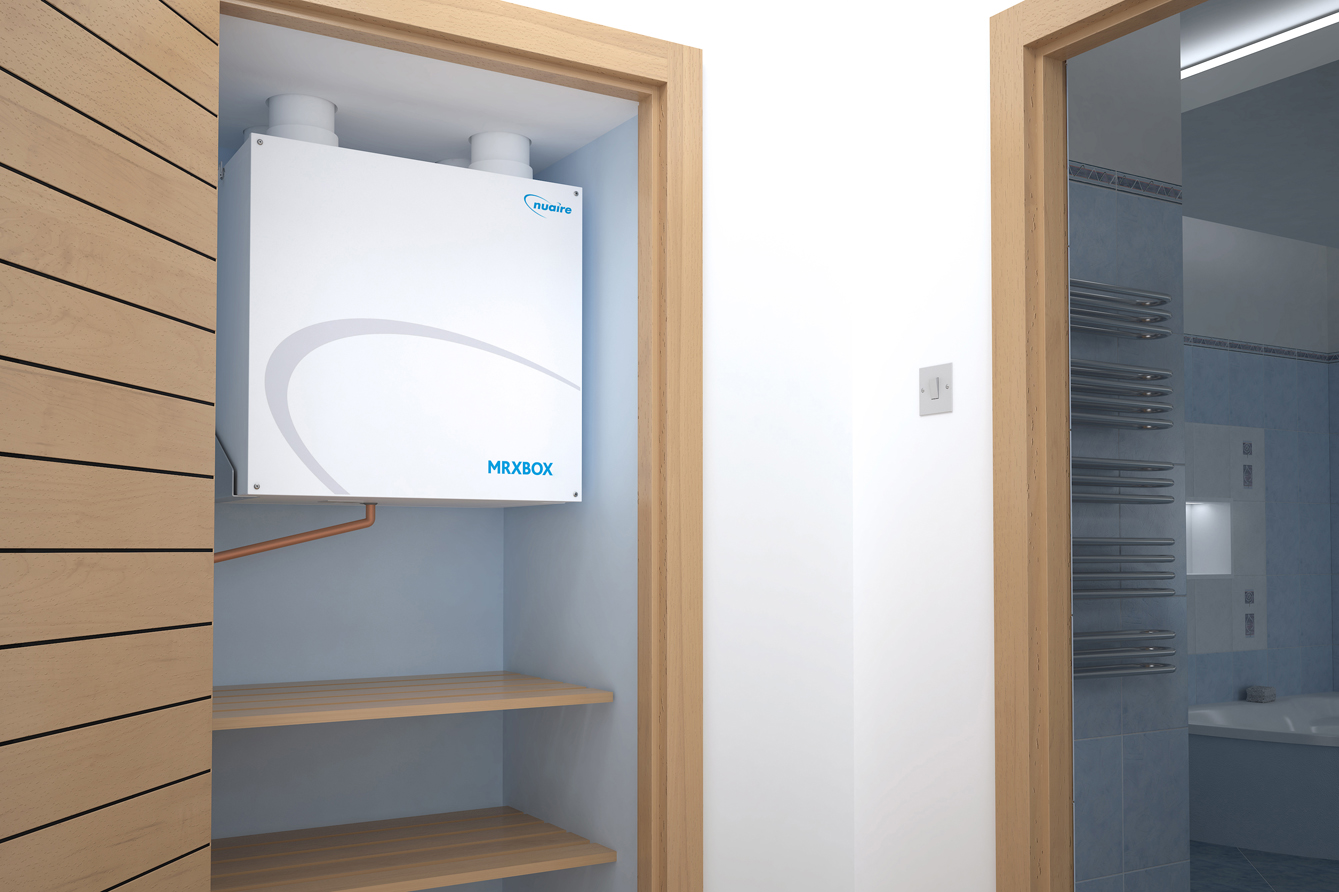Sarah Thomas, Residential Repairs, Maintenance, and Improvement Manager at Nuaire, discusses where ventilation can help and support sustainable housing.
Recently I sat in a conference room of representatives from local authorities and registered social landlords. I was concerned to see a swathe of blank faces when my colleague asked the question, “how important do you think indoor air quality is as part of your decarbonisation strategy?”
I understand the reticence. There is much discussion and focus (dare I say pressure) to finalise decarbonisation plans and identify which path to follow as part of it — be it new Building Regulations or PAS 2035. However, tackling the task needn’t be daunting and local authorities shouldn’t hang back and wait for others to take the lead. Pioneers who are passionate about reaching these goals need to step out of their comfort zones and lead the way for others to follow.
The housing industry is on the cusp of significant change. As part of the UK Government’s net zero strategy and Tenpoint Plan, the country will unlock £90bn in investment to reach ‘net zero’ emissions by 2050. As part of these measures, all publicly funded buildings must be carbon neutral. Amends to the Building Regulations (Parts L and F) will enforce stricter building and infrastructure standards to ensure that both older and new buildings do not contribute to climate change and are fit for future generations.
Organisations will be encouraged to assess the carbon impact of their spending, especially capital spend, and publish details on the overall carbon impact of their budget and major investment and infrastructure decisions. The path to achieving this can feel long, but it is essential for momentum not to stall. There are many ways local authorities can hit their sustainability targets — both long- and short-term — but where does ventilation come in, and how can it help to play a part?
Household emissions
According to The Energy Saving Trust and the Energy Systems Catapult analysis, heating is the highest UK average household CO2 emission right now(1). This explains the emphasis and focused efforts to better insulate homes and make them more airtight for fuel efficiency and heat retention.
While a property that is more airtight can trap heat and therefore make it more efficient, it also traps pollution, allergens, and excess moisture, resulting in poor indoor air quality, condensation and mould. Therefore, it is essential that ventilation goes hand in hand with our strategies to run UK properties more efficiently — ventilation effectiveness could be a key factor in helping local authorities meet their goals.
Improving the condition of housing stock will not only help alleviate the fuel poverty crisis but also reduce needless energy costs which contribute to 14% of total UK greenhouse emissions(2). Improving the energy efficiency of housing stock with a well-managed retrofit programme is crucial to making this a reality and social landlords and local authorities can access a Government funded grant, which will help in this endeavour.

Ventilation solutions
At Nuaire, we believe that the path to net zero and decarbonisation begins with a robust ventilation strategy for the public and private sectors — and this ventilation strategy begins with selecting the right ventilation system for the application.
All ventilation into new-build and refurbishment must comply with Approved Document F, so as a business, we are committed to helping local authorities and social landlords identify and understand the benefits each ventilation system brings to a property — and how it will create the best environment for both the building and the planet.
A range of products is available to social landlords and local authorities to ensure their housing stock is ventilated effectively — from Positive Input Ventilation, extract fans, and MVHR heat recovery units, which offer some of the highest available thermal efficiencies, recovering up to 95% of the heat being extracted. It will also provide residents with significant energy savings combined with very low running costs.
As an industry, we are lucky to be part of the solution to climate change. Indoor air quality continues to be a public health emergency — with most people spending 90% of their time inside and indoor air proven to be two to five times(3) more polluted than the outdoor air. We must provide better ventilation for better homes and better health. It’s time to better understand how ventilation can positively impact our environment, and by working together, we can tackle these net zero goals.
1 Energy Systems Catapult analysis: https://energysavingtrust.org.uk/what-is-net-zero-and-how-can-we-get-there/
2 Climate Change Committee: https://www.theccc.org.uk/2019/02/21/uk-homes-unfit-for-the-challenges-of-climate-change-ccc-says/
3 https://www.bbc.com/future/article/20200909-why-indoor-air-pollution-is-an-overlooked-problem









